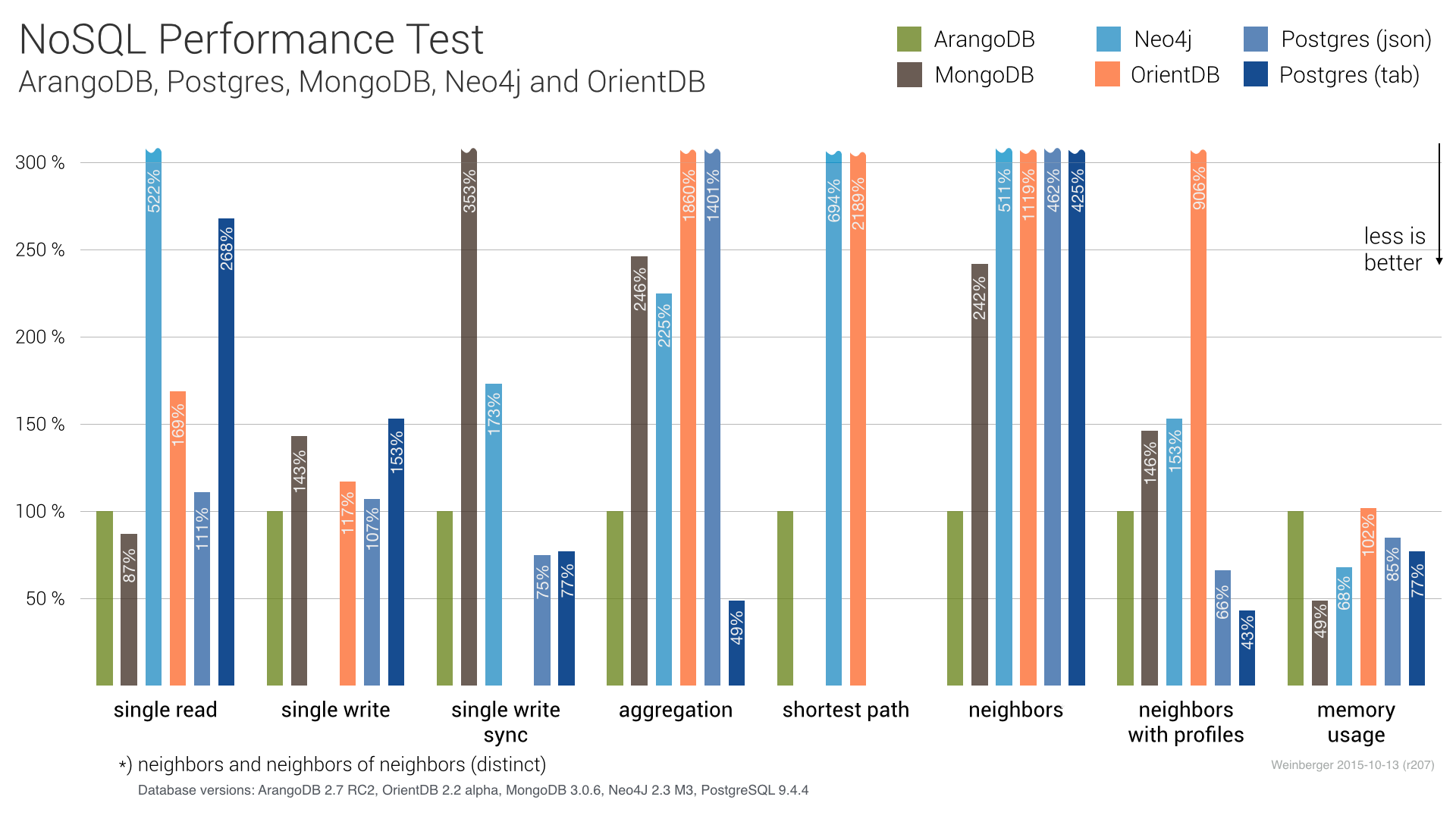
The example above from Neo4j highlights the inclusion of properties in the graph model.

Neo4j is believed to have successfully implemented a property graph model to the storage level. There is an enterprise-level of security, performance and reliability with this product. As a graph database, it is available via open source and also has a commercial licence. It is currently rated number two on G2 with an average of 4.5 out of 5 from 39 reviews. Neo4j: A leading native graph database and graph platform that is used by companies such as Adobe, eBay, Lyft, Comcast and a host of others.

Other notable advantages are the complete admin UI and the presence of graph traversal algorithms. Some of the positive product reviews reveal its impressive feature-rich query language (AQL) and its ease of use compared to other graph-based query languages. These operations consist of the creating and dropping of databases, indexes and collections. The key difference is that AQL is not capable of defining operations. The ArangoDB Query Language (AQL) can be compared to the Structured Query Language (SQL). ArangoDB supports three data models with one database core and a consolidated query language. Combining a Resource Description Framework (RDF) and a graph database.
ARANGODB VS NEO4J PERFORMANCE FREE
It is a free and open source native multimodal database. The leading graph database technologies on G2 have had more reviews, a higher percentage of positive feedback, more data generated from other online networks and social platforms.ĪrangoDB: ArangoDB is currently rated 4.8 out of 5 from 44 reviews on G2.
ARANGODB VS NEO4J PERFORMANCE SOFTWARE
The software review forum G2 has a list of the top-rated graph databases in the market. Retrieving complex hierarchical structures is an advantage that these graph technologies have over relational databases. This nodes and edges setup, makes the retrieval and querying of relationships easier.

Nodes and edges are quite important when looking at graph databases as the later represents the relationship with the former. The data in these graph-based technology expresses how each entity is related to others. A graph database, therefore, is a database created to store data without restricting it to a pre-set model. With a graph database, the relationships that exist within the data can be stored, refined and queried properly. The increase in data has led to a growing need for graph databases or technologies.


 0 kommentar(er)
0 kommentar(er)
